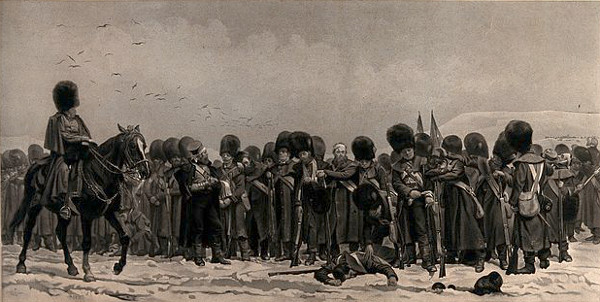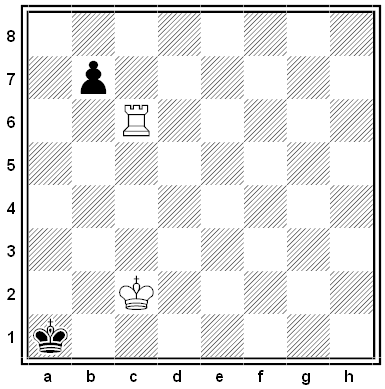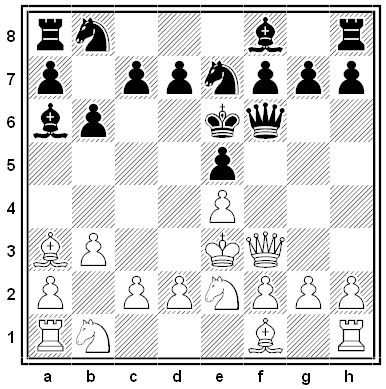Puzzles
Black and White
Roll Call

A problem from the 2002 Moscow Mathematical Olympiad:
A group of recruits stand in a line facing their corporal. They are, unfortunately, rather poorly trained: At the command “Left turn!”, some of them turn left, some turn right, and some turn to face away from the corporal. Is it always possible for the corporal to insert himself in the line so that an equal number of recruits are facing him on his left and on his right?
Podcast Episode 56: Lateral Thinking Puzzles

Here are six new lateral thinking puzzles to test your wits! Solve along with us as we explore some strange scenarios using only yes-or-no questions. Many were submitted by listeners, and most are based on real events.
Black and White
Star Power

A puzzle by A. Korshkov, from the Russian science magazine Kvant:
It’s easy to show that the five acute angles in the points of a regular star, like the one at left, total 180°.
Can you show that the sum of these angles in an irregular star, like the one at right, is also 180°?
Hoop Dreams

A memorably phrased puzzle from The Graham Dial: “Consider a vertical girl whose waist is circular, not smooth, and temporarily at rest. Around the waist rotates a hula hoop of twice its diameter. Show that after one revolution of the hoop, the point originally in contact with the girl has traveled a distance equal to the perimeter of a square circumscribing the girl’s waist.”
Quickie
University of Strathclyde mathematician Adam McBride recalls that in his student days a particular teacher used to present a weekly puzzle. One of these baffled him:
Find positive integers a, b, and c, all different, such that a3 + b3 = c4.
“The previous puzzles had been relatively easy but this one had me stumped,” he wrote later. He created three columns headed a3, b3, and c4 and spent hours looking for a sum that would work. On the night before the deadline, he found one: 703 + 1053 = 354.
“This shows how sad a person I was! However, I then realised also how stupid I had been. I had totally missed the necessary insight.” What was it?
All Relative
1. A puzzle from J.A.H. Hunter’s Fun With Figures, 1956:
Tom and Tim are brothers; their combined ages make up seventeen years. When Tom was as old as Tim was when Tim was twice as old as Tom was when Tom was fifteen years younger than Tim will be when Tim is twice his present age, Tom was two years younger than Tim was when Tim was three years older than Tom was when Tom was a third as old as Tim was when Tim was a year older than Tom was seven years ago. So how old is Tim?
2. Another, by Sam Loyd:
“How fast those children grow!” remarked Grandpa. “Tommy is now twice as old as Maggie was when Tommy was six years older than Maggie is now, and when Maggie is six years older than Tommy is now their combined ages will equal their mother’s age then, although she is now but forty-six.” How old is Maggie?
3. According to Wirt Howe’s New York at the Turn of the Century, 1899-1916, this question inspired an ongoing national debate when it appeared in the New York Press in 1903:
Brooklyn, October 12
Dear Tip:
Mary is 24 years old. She is twice as old as Anne was when she was as old as Anne is now. How old is Anne now? A says the answer is 16; B says 12. Which is correct?
John Mahon
Three Chess Puzzles

1. By A.F. Rockwell. White to mate in two moves. (Solutions are below.)
2. In 1866 Sam Loyd asked: Suppose you’re playing White against an opponent who’s required to mirror every move you make — if you play 1. Nf3 he must play 1. … Nf6, and so on. Can you design a game in which your eighth move forces your opponent to checkmate you with a nonmirror move?

3. An endgame study by J.A. Miles. “White to play and draw the game.”







